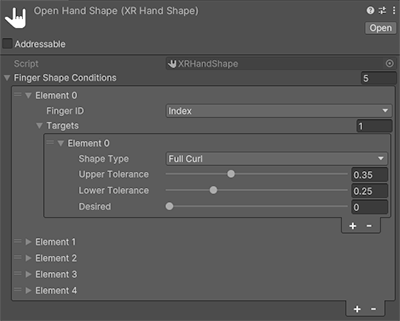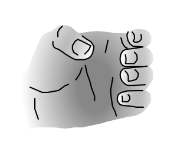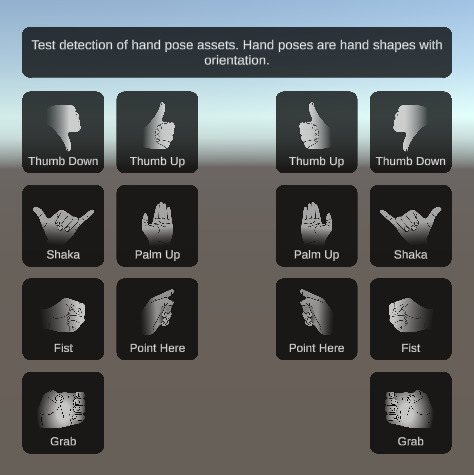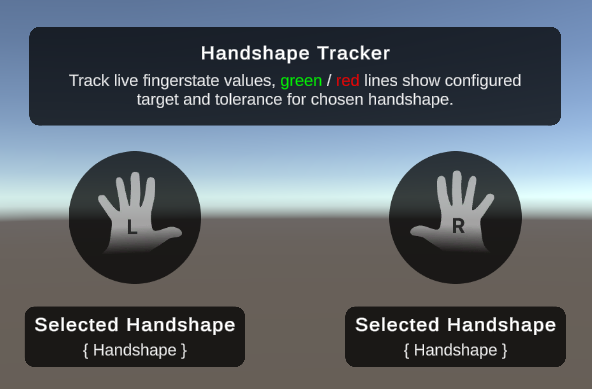8.7 KiB
| uid |
|---|
| xrhands-whats-new |
What's new in version 1.5
Summary of changes in XR Hands package version 1.5. The main updates in this release include:
Added
OpenXR common hand gestures
Support for common hand gestures has been added with initial support for gestures piped through the OpenXR Hand Interaction Profile extension. This includes scripting APIs to expose aim, grasp, grip, pinch, and poke poses and values where appropriate for more information, please refer to the Scripting API.
High Fidelity Tracking Flag
The XR Hands package now enables the detection of high or low fidelity hand tracking data via XRHandJointTrackingState.HighFidelityPose. For OpenXR based devices, this is set if and only if a joint has its position and orientation marked as tracked by the underlying runtime. For other platforms, consult the supporting package's documentation.
Fixed
- Fixed performance regression in hand gesture debug UI.
What's new in version 1.4
Summary of changes in XR Hands package version 1.4. The main updates in this release include:
Added
Hand shape and static gesture detection
The XR Hands package now enables detection of static hand gestures such as thumbs up, thumbs down, or pointing. The static hand gestures are the combination of a specific hand shape with an optional orientation applied. There are some hand gestures included in the Gestures sample, along with other tools to get you started.
For additional information, refer to the custom gesture documentation.
Upper and lower tolerance range for finger shapes
The ability to specify lower and upper tolerance limits for individual finger shapes when defining a hand shape is now available. Each finger shape behaves differently on specific fingers or hands based on various factors. Adding specific tolerance ranges increases the chances of detecting a gesture.
Intermediate grab pose
Grab is one of the more nuanced interactions in XR. Providing an intermediate grab pose with upper and lower tolerances for the finger shapes speeds up the process for implementing grab interactions.
Updates
Debugging menu with prebuilt hand poses
This menu displays text-based tiles for hand poses that are now visually enhanced with drawings to illustrate the meaning of each prebuilt pose. You can still add a tile to detect your own hand pose, which will appear as a text-based tile..
Debugging menu for individually assigned hand shapes
This menu displays live finger state values, and allows for debugging selected hand shapes. The Finger State UI elements have been rebuilt, and enhanced with support for displaying upper and lower tolerance ranges, along with additional UI changes that help to display the state of the currently detected gesture input.
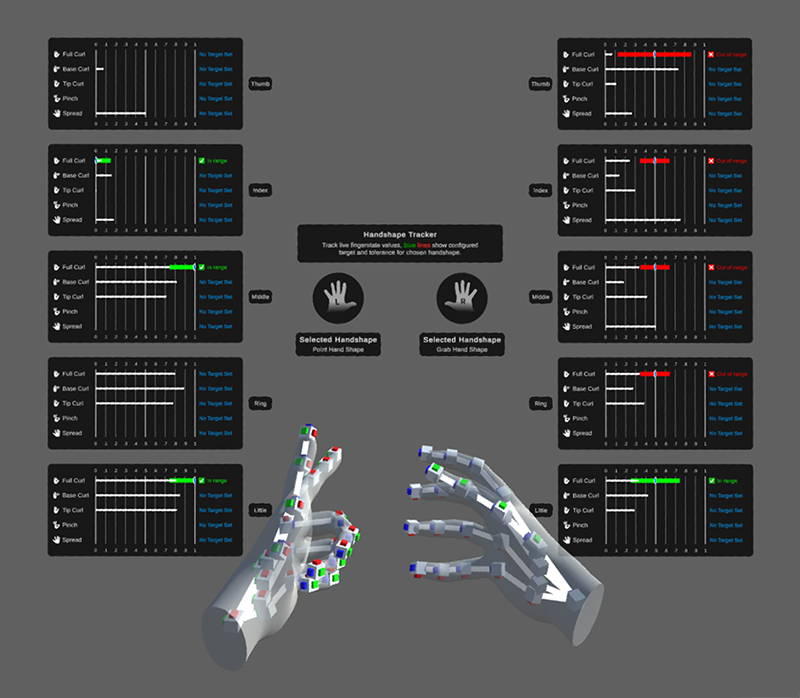
The gesture debugger scene visualizing a gesture
What's new in version 1.3
Summary of changes in XR Hands package version 1.3.
The main updates in this release include:
Added
- Added a root pose offset to the
XRHandSkeletonDriverthat allows an additional offset to the root pose (typically the wrist). This is useful for situations where you want the visual hand representation to stop while interacting with objects in a scene. - Added missing sample script API documentation to make it easier to understand and build off of.
Fixed
- Fixed documentation links for OpenXR features to point at latest documentation version.
What's new in version 1.2
Summary of changes in XR Hands package version 1.2.
The main updates in this release include:
Added
- Added
IXRHandProcessorinterface that intercepts and allows post-processing joint data before being used by other scripts. More information can be found on the XR Hands Joint Processing manual page. - Added two samples to the Hand Visualizer sample for how to use the new Joint Processing feature to change the visual output of hand tracking.
XRHandandXRHandJointboth now implementIEquatable, and haveEquals,GetHashCode, and the==and!=operators overloaded.- Added
XRHandTrackingEventscomponent that subscribes to hand tracking events for a specific hand and surfaces Unity Events when the hand updates or tracking state changes. - Added
XRHandMeshControllercomponent that subscribes to events from aXRHandTrackingEventsand can optionally show or hide a mesh. - Added
XRHandSkeletonDrivercomponent that subscribes to events from aXRHandTrackingEventsand updates a hierarchy of Transforms for eachXRHandJoint.
Changed
- Minimum supported Unity Editor version has changed to 2021.3.
Fixed
- Fixed Hand Visualizer component so it will use another running
XRHandSubsystemif the first is stopped. - Fixed exception in Hand Visualizer component when a joint is invalid.
- Fixed rendering of lines that connect joints in
HandVisualizersample when used with the device simulator. Also removed the Origin property from the component since it was no longer used.
What was new in version 1.0
Summary of changes in XR Hands package version 1.0.
The main updates in this release include:
Added
Added subsystem for cross-platform hand-tracking and accompanying types.
Types you might care about as a user:
XRHandSubsystemDescriptor, which you can retrieve aListof withSubsystemManager.GetSubsystemDescriptors.XRHandSubsystem, which can be created with a call toCreateon the above descriptor type.XRHand, which you can retrieve fromXRHandSubsystemwith itsleftHandandrightHandproperties. These contain joints androotPosedata, as well as itsHandedness.XRHandJoint, which you can retrieve from eachXRHandusingGetJointto query for joint tracking state, pose, radius, and velocity data on a per-joint basis.XRHandJointIDUtility, which contains extension methods for certainenums listed below and also housesFromIndex, which you can use when looping over an array to get the correspondingXRHandJointID(useful when callingXRHand.GetJoint).
As well as these enums:
XRHandJointTrackingState, a flags-enumused to denote which fields are valid and can be retrieved via theirTryGet...methods onXRHandJoint.XRHandJointID, used to identify each joint, and required when accessing joint data usingXRHand.GetJoint. If looping over an array of joint data, useXRHandJointIDUtility.FromIndexto convert your index toXRHandJointID, which is required forXRHand.GetJoint.Handedness, used to identify which hand is referred to by anXRHandusing itshandednessproperty.XRHandFingerID, not used anywhere else in the API surfaced in this package besides its extension methods inXRHandJointIDUtility:GetFrontJointIDandGetBackJointID, which together provider an inclusive range forXRHandJointIDs spanned by the finger represented byXRHandFingerID.
The OpenXR package must be installed and in use for these to work:
- Added OpenXR support through
HandTrackingandOpenXRHandProvidertypes. - Added support for Meta Hand Tracking Aim extension in OpenXR through
MetaHandTrackingAim.
Additional types you may need to interact with if writing a provider (not a common use case):
XRHandSubsystemProvider, which the subsystem asks for data whenever itsTryUpdateHandsis called (built-in Unity setup calls this each frame) and is also queried when the subsystem and provider are created for which common joints are in the provider's layout usingGetHandLayout.XRHandProviderUtility, which providers should call into usingCreateJointduring theTryUpdateHandsper-frame call to fill out the left- and right-hand joint arrays. This same type also has a nestedSubsystemUpdatertype to be used for automatically updating the subsystem each frame. Users can respond to updates by subscribing to the subsystem'supdatedHandscallback.
Also added a visualizer sample, which demonstrates drawing using both meshes and per-joint prefabs. You can add this sample to your project through the Samples tab of this package's view in the Package Manager window. This sample has a mesh and script that assume OpenXR layout, so it is recommended you either use that plug-in or another one that conforms to the OpenXR hand joint layout.
For a full list of changes and updates in this package, see the XR Hands package changelog.
